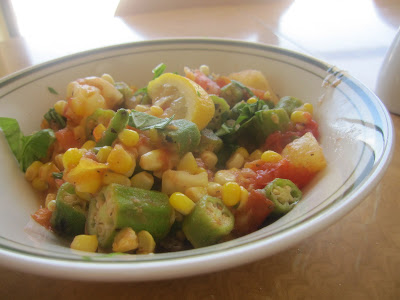In T.J. Maxx the other day, I saw a Calphalon tart pan for $7.99. The tart pans I own are the flexible, irritatingly thin pans of yesteryear. This one is sturdy, nonstick, and devastatingly beautiful (yes, gleaming and shiny and beautiful.) I wanted--no needed--- it. I bought it.
So I needed a tart worthy of such a pan. Enter Epicurious.com, my go-to recipe bank. Up comes a Lime Tart with Blackberries and Blueberries. I had a bag of lemons. I had the fruit. I got to work. The first crust I made was a disaster. The oven at the beach house is hot and fast (sounds like one of those girls your mommas warned you about.) The first crust came out a little crispy, which is a euphemism for burnt, burnt, burnt. The second crust was parfait.
The lemon curd needed a little coddling, as I imagine curds do. I whisked and whisked and whisked my little heart out, and it thickened not. I heard curd can be made quite effectively in the microwave (gasp!) so I gave it a try. It thickened in a New York minute. I wish all of you thick curd, but if it doesn't work, nuke it in 25 second intervals, whisking after each one.
The finished product, y'all, was AWE-SOME. Try it, now.
Lemon Blackberry Tart with Shortbread Crust
Serves 8-10
Adapted from Bon Appetit
Lemon Curd
3 large eggs
3 large egg yolks
1 cup sugar
3/4 cup fresh lemon juice
6 tablespoons (3/4 stick) unsalted butter, cut into 6 piecesFruit Topping
1 pint fresh blackberries
½ pint fresh blueberries
Shortbread Crust
1 ½ sticks butter, room temperature
1/3 cup sugar
1 large egg yolk Scant 2 cups all-purpose flour
1 large pinch of saltFor lemon curd:
Set fine metal strainer over medium bowl and set aside. Whisk eggs, egg yolks, and sugar in another medium bowl (glass or metal). Whisk in lemon juice. Set bowl over large saucepan of gently simmering water (do not allow bottom of bowl to touch water). Whisk constantly until curd thickens, about 12 minutes. If curd isn't thickening, turn up the heat on the water. When thick, immediately pour curd through prepared strainer set over bowl. Add butter to warm strained curd; whisk until blended and smooth. Press plastic wrap directly onto surface of curd, covering completely. Refrigerate until cold. For crust:
Using electric mixer, beat butter and sugar in medium bowl until well blended, 1 to 2 minutes. Add egg yolk; beat to blend. Add flour and salt and mix on low speed until mixture resembles large peas. Using hands, knead in bowl just until dough comes together.
Transfer dough to 10-inch-diameter tart pan with removable bottom. Press dough evenly up sides and onto bottom of pan. Chill 20 minutes.
Preheat oven to 325 degrees F. Bake until golden brown, about 28 minutes. Cool completely in pan on rack.
For topping:
Remove sides from tart pan and place crust on plate. Spread lime curd evenly in baked crust. Arrange blackberries in a circle around the edge of the crust. Mound blueberries in center of tart. Serve immediately.





























